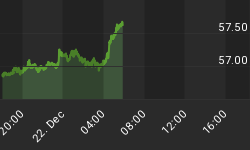In the financial markets, the term "Carry Trade" refers to the way that most financial intermediaries (money center banks, Wall Street investment banks, and hedge funds) make their really large profits. Indeed, the engine driving financial profits is quite simple: borrow at low short-term interest rates, and lend at higher longer-term interest rates. In the Carry Trade, to enhance returns and make them exciting, leverage is used. For liquid assets like Treasuries and Agency Securities, leverage of over 25 to 1 is possible!
When the Federal Reserve was fighting the collapse of the NASDAQ stock market bubble and cut short-term interest rates to 1 percent, the financial markets were a "Carry Trader's delight". The interest rate yield curve was steep, and credit spreads were wide and narrowing. To make money, financial institutions simply needed to close their eyes, buy longer dated paper and lower rated credits, and then sit back and enjoy the Fed's interest rate subsidy. There was a lot of easy money to be made and even corporations got into making money through finance. Currently, 40 percent of corporate profits in S&P companies are made from financing activities. Indeed, a firm like GM doesn't make money from manufacturing and selling cars anymore; it makes money by financing cars and houses.
So, wither the Carry Trade? The Federal Reserve has raised interest rates eight times with no end in sight and the yield curve is starting to go flat. Notice that the Fed funds rate is increasing to at least 3.5 percent, while the yield on the 10-year Treasury note has been brought down to under 4.0 percent by foreign central banks and long dollar speculators. Now that the yield curve has "lost its curve", this profit engine has run out of gas.
The only way to make money in the Carry Trade game is to take on more credit risk and increase leverage, but the problem with that is credit spreads are already at levels that have become so narrow that spread-lending offers little reward, and massive risk. The downgrade of GM and Ford to junk has come at a time when the credit cycle has started to turn from improving credits and narrowing credit spreads, to negative credit surprises and widening spreads. A widening credit spread can push down a bond price faster than rising interest rates.
Recently, there has been another rally in the Treasury market which has pushed yields down, and prices up, for Treasury notes and Agency Securities. Now seems to be the perfect time for Carry Traders to cash in their chips and leave the financial market casino with their winnings. Money managers who continue to borrow short to lend long have little to gain and much to lose!















